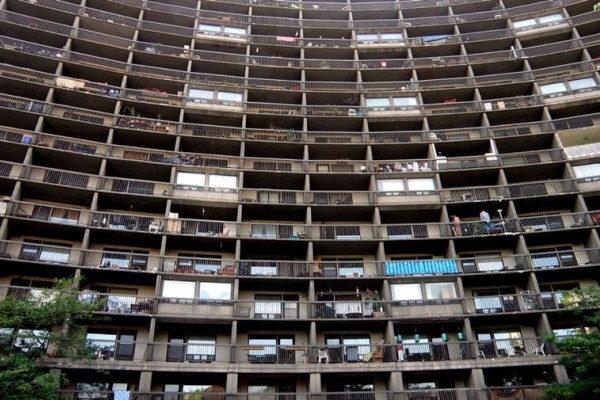-

Loblaw sees ‘profit improvements’ in wage and benefit cuts
Twice since the pandemic began, the billionaire CEO of Loblaw Companies Ltd. has risked job action by the company’s low wage workers in a bid to cut their $2 pandemic premium pay. More than just cutting costs, this is about keeping workers desperate or—in the company’s words, “flexible.” Desperate workers tend to tolerate wage cuts to make them more desperate still. Every cut won will be used to aid the next one.
-

Federal pandemic assistance on the chopping block—another way to ‘discipline’ workers
The Trudeau government’s willingness to curtail EI eligibility and throw unemployed workers off its key pandemic benefit programs is a reminder that leaving people behind remains a feature of Canada’s social assistance regime—not a bug. Effective October 23, barring any unexpected intervention, Canada’s main support programs for workers thrown into unemployment by COVID will end.
-

Bill Davis’s anti-worker legacy
According to many pundits, former Ontario Premier Bill Davis deserves credit for having “ushered in Ontario’s modern era”—one marked by underfunded hospitals, schools in disrepair, and enormous restrictions on the rights of workers to organize. In the end, Davis did what he had to to remain in power and maintain the status quo as best he could. But that status quo always required keeping the working class down.
-

Is the Canada Recovery Benefit a ‘workfare’ program in disguise?
Leaving those in financial difficulty behind for a lower-wage future isn’t a bug in the Canada Recovery Benefit system—it’s a feature of a program designed and redesigned to crack down on recipients and maximize “incentive to work.” The CRB was, to this end, designed within the ‘workfare’ tradition that’s marked every social program in Canada since at least the mid-1990s.
-
The Regina Manifesto at 85: More relevant than ever?
Despite Niki Ashton talking about how the NDP needs to return to the “bold socialist vision” offered in the 1933 Regina Manifesto—the founding programme of the CCF—few have discussed what that actually would mean. This is an oversight of some significance, because the Manifesto is remarkable for its painstaking description of what a socialist Canada would look like.
-

Canada’s five giant banks ought to be nationalized, not bailed out
Canada’s banking system is on the edge of a crisis, once again, with a collective debt of $1.8 trillion—and the public will be on the hook for most of it, sooner than most think. Last week, the Bank for International Settlements said Canada, Hong Kong and China’s banking systems are the world’s most at-risk of a severe crisis.
-

Ontario NDP has no answers for Toronto’s homeless death crisis
In the face of a ruling class ready to use not just dehumanizing pauperism but deadly pauperism to scare its workforce into line, Toronto’s poor need representatives who fight to defend all social housing units and shelter space. The NDP needs to recapture its humanity if it is to remain at all relevant. Working Canadians do not need another party of enemies.
-

Housing in the age of austerity: Toronto’s war on the poor
For those in Toronto’s growing majority of low income neighbourhoods, things are bad and getting worse. But it wasn’t always this bad. In 1970, 66 percent of Toronto neighbourhoods were middle-income. This was when the labour market allowed for single-income families, when social services were better available, and when affordable housing was constructed according to need.
-

A brief history of Canadian labour woes
In addition to a loss of union jobs, globalization also accelerated Canada’s shift from a manufacturing to a service sector-dominated nation, further weakening prospects for organizing. Much of this has to do with precarity, as non-standard work provides employers increased flexibility in scheduling, hiring, lay-offs and firing, acting as tools in employers’ arsenals to fight a drive.
-

Inside Canada’s defence lobby
Major defence contractors, Lockheed Martin, General Dynamics, Raytheon and others have forged very strong ties to the Harper government. Through a web of lobbyists, former officials, generals and government insiders, critics say it is the interests of defence contractors, not the public that drives the purchase of military equipment.




